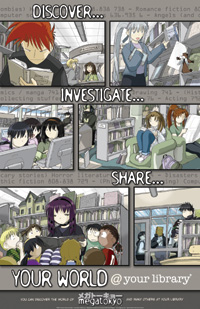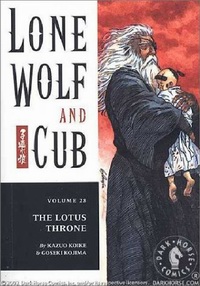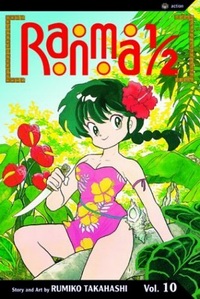by Sarah Evans, dMLIS
What is Manga?My introduction to the word "manga" came from a quiet teenager at the library. Trying to make conversation at the circulation desk, I commented on all the Japanese anime she was checking out. "Um, anime is like movies and TV shows. Like animation, ya know? This is manga," she said, her eyebrows furrowed over my adult stupidity. As the teen contact for my small library, I obviously needed to get more information.

Anime and manga are closely related. Often, a popular manga series becomes a television series or movie and vice versa. In the simplest sense, manga are comic books. Typically, serial stories are published in magazine form from countries like Japan, Korea, or China. Several issues are bound together into a volume and a series can run anywhere from four volumes to 50 or more. When manga was initially imported to the U.S., the publishers not only translated the text but also rearranged the pictures to a left to right orientation. American readers complained because this change altered the original artist's lines, so most manga imported here has English text but retains the right to left format.
Yet manga stands apart from traditional American comic books. Not limited to characters with superpowers or collections of daily funnies, the subject matter is as wide as the imagination. The plots are often complex and genres include fantasy, sci-fi, romance, comedy, action, horror, and more. Similar in artistic style with black and white line art, the manga graphic format can be used to tell sophisticated stories on multiple levels.
Why You Should Know About ItManga's popularity has exploded in the last 15 years and influenced art, storytelling, and U.S. publishing trends. Several American manga publishing houses have evolved, including offshoots of the more traditional comics and book publishers. Most public libraries and many school libraries collect manga series to meet the interests of teens, as well as children and adults. So if you have plans to work in either of these venues, it is wise to have a basic familiarity with the popular series and publishers.

Manga and comic books in general are also being used in literacy efforts. Teachers and librarians have successfully used this graphic format to increase student reading and raise reading levels. For an insightful look at this topic, read "The Secret Origin of Good Readers" by Dr. Robin A. Hill.
Plus, it's fun! Manga is quick and light to read, something appreciated by the busy student mind. As I mentioned, there is a wide selection of genres to choose from. I myself am addicted to a few "shojo" or girls manga titles. And when my coworkers look askance at my reading selections, I confidently say, "I'm researching teenage trends." No more questions asked.
How to Deal with Culture ShockA librarian from Brooklyn suggested I open this article with the statement, "IT'S NOT ALL PORN." Apparently, many patrons have encountered surprising images and come to this unfortunate conclusion. A common problem for American consumers is the misconception that all comics are for little children, ala Donald Duck. Manga titles are written for a variety of age groups and therefore the age-appropriateness is dependent on the intended audience. Another difficulty is the difference between cultures on what is "age-appropriate." Experienced teen librarian, Katherine Kan, regularly reviews manga for the publication Voices of Youth Advocates (VOYA) and summarizes the situation this way, "Manga reflects the culture from which it originally came. Therefore, all-ages titles may include bathroom humor and partial nudity, which aren't considered taboo for children in other countries. Most manga publishers do put some kind of age ratings on their publications, but librarians need to keep those cultural differences in mind."

While cultural differences can create difficulties, these difference also create the opportunities to learn about life in other places. When I do book talks at the local middle school, I always mention new manga series the library is collecting, impressing the students. In turn, the teens then impress me with their knowledge of Asian culture and history. Often, a teen's interest in both manga and anime has spurred them into studying the culture that created these art forms.
How to Learn MoreThere are several good resources online, by both fans and producers of manga. Here's some websites to get you started:
- Gilles Poitras is an international expert on manga and has developed a guide for librarians.
- Robin Brenner hosts a website full of reviews for graphic novels and manga, including age ranges.
- The Brodart Company has asked many teachers and librarians to write articles on graphic novels for their website.
- Viz and TokyoPop are two of the largest publishers of manga in the U.S.
- GNLIB is a website and listserv dedicated to graphic novels in libraries.
